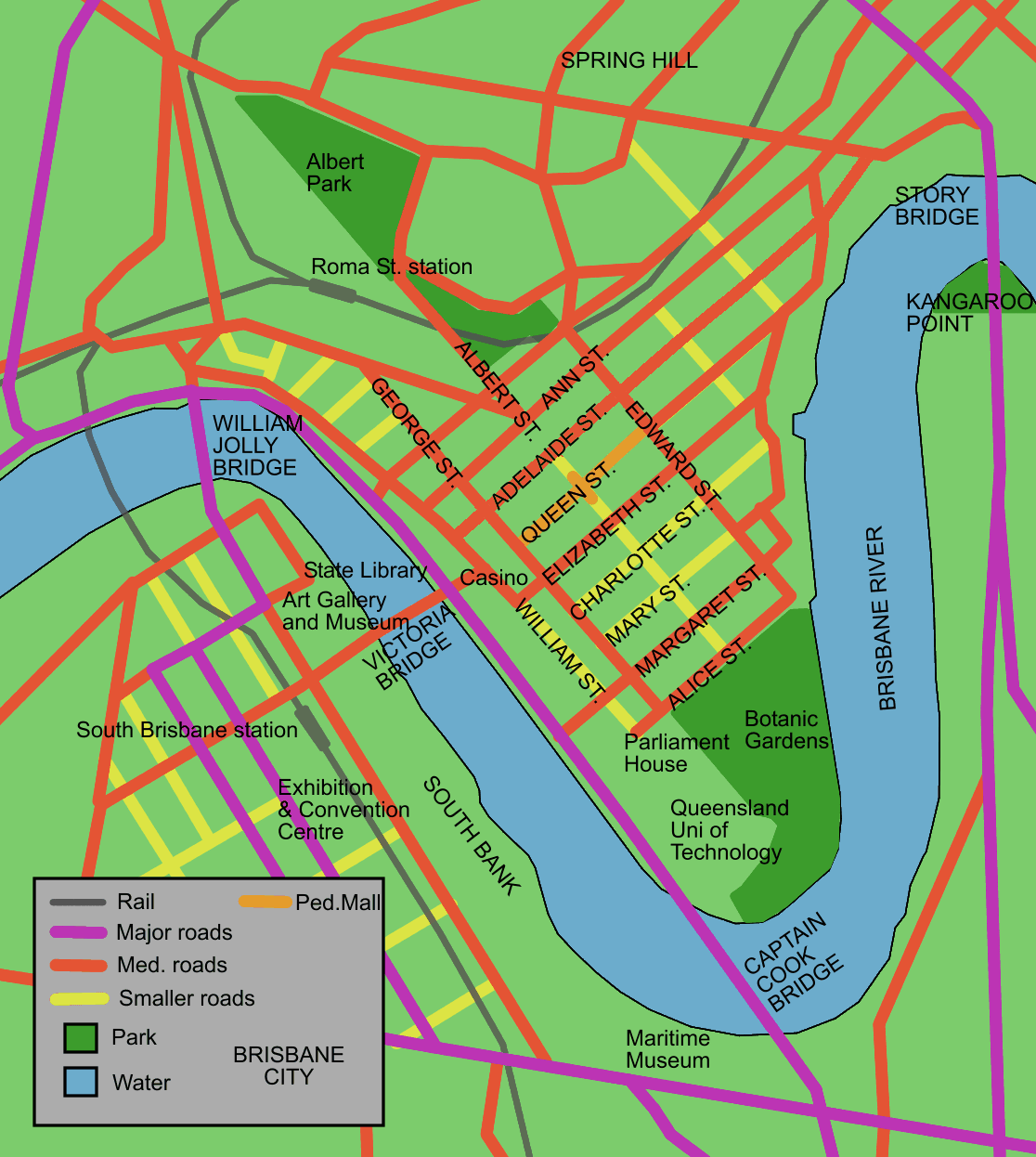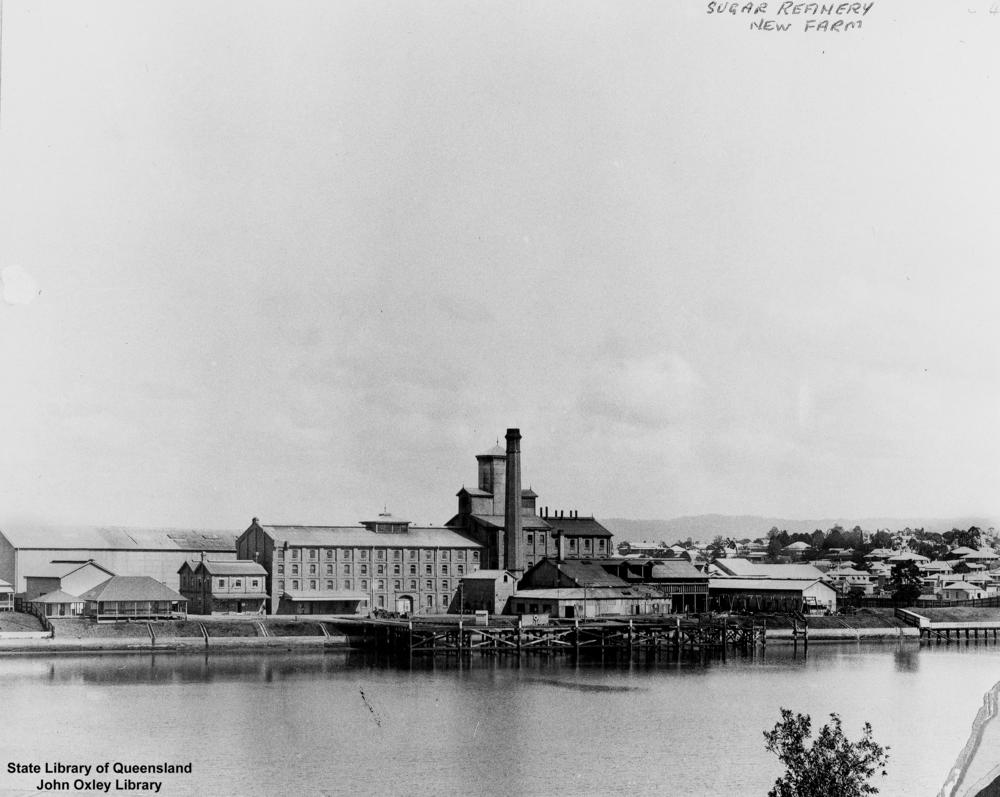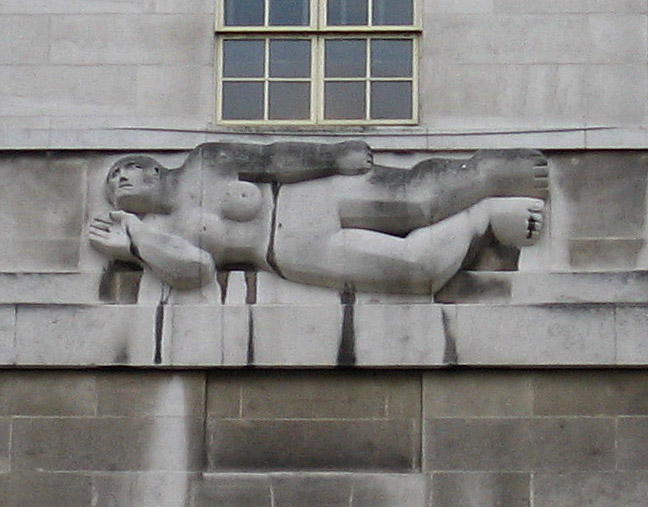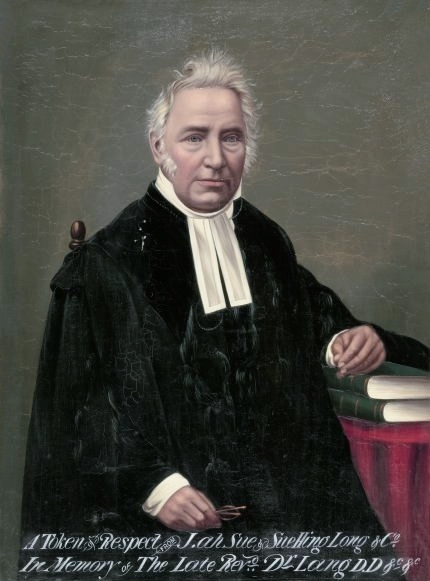|
New Farm Park, Brisbane
New Farm Park is a heritage-listed riverfront Park, public park at 137 Sydney Street, New Farm, Queensland, New Farm, City of Brisbane, Queensland, Australia. It was designed by Albert Herbert Foster and built from 1914 to 1950 by Gladwin Legge & Co. It was added to the Queensland Heritage Register on 7 February 2005. The park covers and is at the southeastern end of the New Farm peninsula on a bend in the Brisbane River. The Brisbane Powerhouse, Powerhouse arts centre is at the eastern end of the park. The park includes the New Farm Park ferry wharf and links to the Brisbane River#Brisbane Riverwalk, Brisbane Riverwalk from Newstead, Queensland, Newstead to Toowong. It is one of Brisbane's most popular parklands and tourist attractions. History New Farm Park, created in 1914, currently covers of land, and is bounded by Brunswick Street, Brisbane, Brunswick Street and Sydney Street, New Farm. It adjoins the Brisbane Powerhouse arts precinct and the Brisbane River. Prior to ... [...More Info...] [...Related Items...] OR: [Wikipedia] [Google] [Baidu] |
Brisbane Central Business District
Brisbane City is the central suburb and central business district of Brisbane, the state capital of Queensland, Australia. It is colloquially referred to as the "Brisbane CBD" or "the city". It is located on a point on the northern bank of the Brisbane River, historically known as ''Meanjin'', ''Mianjin'' or ''Meeanjin'' in the local Aboriginal Australian dialect. The triangular shaped area is bounded by the median of the Brisbane River to the east, south and west. The point, known at its tip as Gardens Point, slopes upward to the north-west where the city is bounded by parkland and the inner city suburb of Spring Hill to the north. The CBD is bounded to the north-east by the suburb of Fortitude Valley. To the west the CBD is bounded by Petrie Terrace, which in 2010 was reinstated as a suburb (after being made a locality of Brisbane City in the 1970s). In the the suburb of Brisbane City had a population of 9,460 people. Geography The Brisbane central business district is ... [...More Info...] [...Related Items...] OR: [Wikipedia] [Google] [Baidu] |
Queensland Governor
The governor of Queensland is the representative in the state of Queensland of the monarch of Australia. In an analogous way to the governor-general of Australia at the national level, the governor performs constitutional and ceremonial functions at the state level. In particular the governor has the power to appoint and dismiss the premier of Queensland and all other ministers in the cabinet, and issue writs for the election of the state parliament. The current governor of Queensland, former Chief Health Officer of Queensland Jeannette Young, was sworn in on 1 November 2021. The chief justice of the Supreme Court of Queensland, currently Helen Bowskill, acts in the position of governor in the governor’s absence. As from June 2014, Queen Elizabeth II, upon the recommendation of then-Premier Campbell Newman, accorded all current, future and living former governors the title 'The Honourable' in perpetuity. Official residence The governor of Queensland has resided at Governme ... [...More Info...] [...Related Items...] OR: [Wikipedia] [Google] [Baidu] |
CSR Refinery, New Farm
CSR Refinery is a heritage-listed former refinery at Lamington Street, New Farm, City of Brisbane, Queensland, Australia. It was built from 1892 to 1893. It is also known as Colonial Sugar Refining Company Refinery of New Farm. It was added to the Queensland Heritage Register on 21 October 1992. History The CSR Refinery at New Farm was erected by the Colonial Sugar Refinery Company in 1892-1893. Founded in Sydney in 1855, the Colonial Sugar Refining Company (now CSR Limited) has come to dominate the Australian sugar industry, its very name synonymous with sugar. The 19th century was a time of enormous change in the history of sugar which was to fuel the growth of companies such as CSR and the development of sugar as a new industry in places with suitable growing conditions such as Queensland. The technological advances in the refining process at this time transformed sugar from a luxury item to a staple food and saw a corresponding dramatic increase in the consumption of sug ... [...More Info...] [...Related Items...] OR: [Wikipedia] [Google] [Baidu] |
John Oxley Library
The State Library of Queensland is the main reference and research library provided to the people of the State of Queensland, Australia, by the state government. Its legislative basis is provided by the Queensland Libraries Act 1988. It contains a significant portion of Queensland's documentary heritage, major reference and research collections, and is an advocate of and partner with public libraries across Queensland. The library is at Kurilpa Point, within the Queensland Cultural Centre on the Brisbane River at South Bank. History The Brisbane Public Library was established by the government of the Colony of Queensland in 1896, and was renamed the Public Library of Queensland in 1898. The library was opened to the public in 1902. In 1934, the Oxley Memorial Library (now the John Oxley Library), named for the explorer John Oxley, opened as a centre for research and study relating specifically to Queensland. The Libraries Act of 1943 established the Library Board of Queenslan ... [...More Info...] [...Related Items...] OR: [Wikipedia] [Google] [Baidu] |
Henry Moore (gardener)
Henry Spencer Moore (30 July 1898 – 31 August 1986) was an English artist. He is best known for his semi- abstract monumental bronze sculptures which are located around the world as public works of art. As well as sculpture, Moore produced many drawings, including a series depicting Londoners sheltering from the Blitz during the Second World War, along with other graphic works on paper. His forms are usually abstractions of the human figure, typically depicting mother-and-child or reclining figures. Moore's works are usually suggestive of the female body, apart from a phase in the 1950s when he sculpted family groups. His forms are generally pierced or contain hollow spaces. Many interpreters liken the undulating form of his reclining figures to the landscape and hills of his Yorkshire birthplace. Moore became well known through his carved marble and larger-scale abstract cast bronze sculptures, and was instrumental in introducing a particular form of modernism to the Unite ... [...More Info...] [...Related Items...] OR: [Wikipedia] [Google] [Baidu] |
Eagle Farm, Queensland
Eagle Farm is an eastern industrial suburb of the City of Brisbane, Queensland, Australia. In the , Eagle Farm had a population of 0 people. The neighbourhood of Whinstanes is located in Eagle Farm (). Geography Eagle Farm is situated north-east of the Brisbane central business district. It is bounded to the south by the median of the Brisbane River. Eagle Farm is within the industrial-development zone known as Australia TradeCoast. Kingsford Smith Drive passes through the suburb from west (Hamilton) to east (Pinkenba). The Gateway Motorway passes through the suburb from the south (Murarrie) crossing the Brisbane River via the Sir Leo Hielscher Bridges and then exits to the north ( Brisbane Airport). The Southern Cross Way splits from the Gateway Motorway and also heads north-west, becoming the north-western boundary of Eagle Farm with Hamilton. The Doomben/Pinkenba railway line passes through the suburbs from west ( Ascot/Hamilton) to east (Pinkenba) to the north of K ... [...More Info...] [...Related Items...] OR: [Wikipedia] [Google] [Baidu] |
Coopers Plains, Queensland
Coopers Plains is a southern suburb in the City of Brisbane, Queensland, Australia. In the , Coopers Plains had a population of 5,483 people. Geography Coopers Plains is south-west of the Brisbane CBD. The suburb is home to the Queen Elizabeth II Jubilee Hospital. History The locality was originally called Cowper's Plains. It was probably named by Patrick Logan after Dr Henry Cowper, Assistant Surgeon-in-Charge at the Moreton Bay Penal Settlement from 1823 to 1832. A convict settlement was established at Cowper's Plains in 1828. The name was corrupted and by 1860 the area was known as Cooper's Plains. By 1877 it was known as Coopers Plains. The first post office opened in 1876. In October 1884, 275 allotments of "Flemington Estate" were advertised for sale by T. Howling& Co. A map advertising the sale states that the estate was close to the Coopers Plains Railway Station and that coaches passed the estate every day. Coopers Plains railway station on the South Coast ... [...More Info...] [...Related Items...] OR: [Wikipedia] [Google] [Baidu] |
Separation Of Queensland
The Separation of Queensland was an event in 1859 in which the land that forms the present-day State of Queensland in Australia was excised from the Colony of New South Wales and created as a separate Colony of Queensland. History European settlement of Queensland began in 1824 when Lieutenant Henry Miller, commanding a detachment of the 40th Regiment of Foot, founded a convict outpost at Redcliffe. The settlement was transferred to the north bank of the Brisbane River the following year and continued to operate as a penal establishment until 1842, when the remaining convicts were withdrawn and the district opened to free settlement. By then squatters had already established themselves on the Darling Downs, far distant from the seat of the New South Wales government in Sydney. Agitation soon commenced for the creation of a separate northern colony which could look after local interests, with the clamour being no less apparent in the fledgling township of Brisbane. In the vangua ... [...More Info...] [...Related Items...] OR: [Wikipedia] [Google] [Baidu] |
New South Wales Legislative Council
The New South Wales Legislative Council, often referred to as the upper house, is one of the two chambers of the parliament of the Australian state of New South Wales. The other is the Legislative Assembly. Both sit at Parliament House in the state capital, Sydney. It is normal for legislation to be first deliberated on and passed by the Legislative Assembly before being considered by the Legislative Council, which acts in the main as a house of review. The Legislative Council has 42 members, elected by proportional representation in which the whole state is a single electorate. Members serve eight-year terms, which are staggered, with half the Council being elected every four years, roughly coinciding with elections to the Legislative Assembly. History The parliament of New South Wales is Australia's oldest legislature. It had its beginnings when New South Wales was a British colony under the control of the Governor, and was first established by the ''New South Wales Act ... [...More Info...] [...Related Items...] OR: [Wikipedia] [Google] [Baidu] |
Richard Jones (1786–1852)
Richard Jones (1786 – 6 November 1852) was an English-born politician in New South Wales and Queensland (then part of New South Wales), Australia. Early life Jones was born at Chirbury in Shropshire to Thomas Bowdler Jones, small landowner and brewer, and Elizabeth Ann (née) Philips. He was a clerk in London before migrating to New South Wales, where he became a merchant and pastoralist. In 1823 he married Mary Louisa Peterson, with whom he had eight children. Politics On 30 January 1829, Jones was an appointed member of the New South Wales Legislative Council, a role he held until 5 January 1843. In 1832, the Council changed from a fully appointed body to become a body of 36 members with 12 appointed and 24 elected. From 17 July 1843 Jones continued as an appointed member of the Council. However, even as he appointed, his merchantile business was suffering in the economic downturn that prevailed from 1842 to 1844. In August 1843, he was unable to pay debts of £18 ... [...More Info...] [...Related Items...] OR: [Wikipedia] [Google] [Baidu] |
Patrick Logan
Captain Patrick Logan (1791 – October 1830) was the commandant of the Moreton Bay Penal Settlement from 1826 until his death in 1830 at the hands of Aboriginal Australians who objected to him entering their lands. As he had been hated by convicts, there were rumours that escaped convicts living in the bush had attacked him, but there is no evidence of this. Born in East Renton, Berwickshire, Scotland, he was the youngest son of a Scottish landowner and farmer, Abraham Logan and Janet Johnstown. He was baptised at Coldingham, Berwickshire on 15 November 1791. Logan had a distinguished military career. He was known as a strict commandant of the penal colony to the point of cruelty. Logan made significant explorations of what was to become known as South East Queensland. He was the first white person to visit the area which became Ipswich, Queensland and some consider him to be the founder of Queensland. Military career In 1810 he joined the 57th Foot Regiment and served in th ... [...More Info...] [...Related Items...] OR: [Wikipedia] [Google] [Baidu] |
City Botanic Gardens
The City Botanic Gardens (formerly the Brisbane Botanic Gardens) is a heritage-listed botanic garden on Alice Street, Brisbane City, City of Brisbane, Queensland, Australia. It was also known as Queen's Park. It is located on Gardens Point in the Brisbane CBD and is bordered by the Brisbane River, Alice Street, George Street, Parliament House and Queensland University of Technology's Gardens Point campus. It was established in 1825 as a farm for the Moreton Bay penal settlement. The Gardens include Brisbane's most mature gardens, with many rare and unusual botanic species. In particular the Gardens feature a special collection of cycads, palms, figs and bamboo. The City Botanic Gardens was added to the Queensland Heritage Register on 3 February 1997. The Queensland Heritage Register describes the Gardens as "the most significant, non-Aboriginal cultural landscape in Queensland, having a continuous horticultural history since 1828, without any significant loss of land ... [...More Info...] [...Related Items...] OR: [Wikipedia] [Google] [Baidu] |










